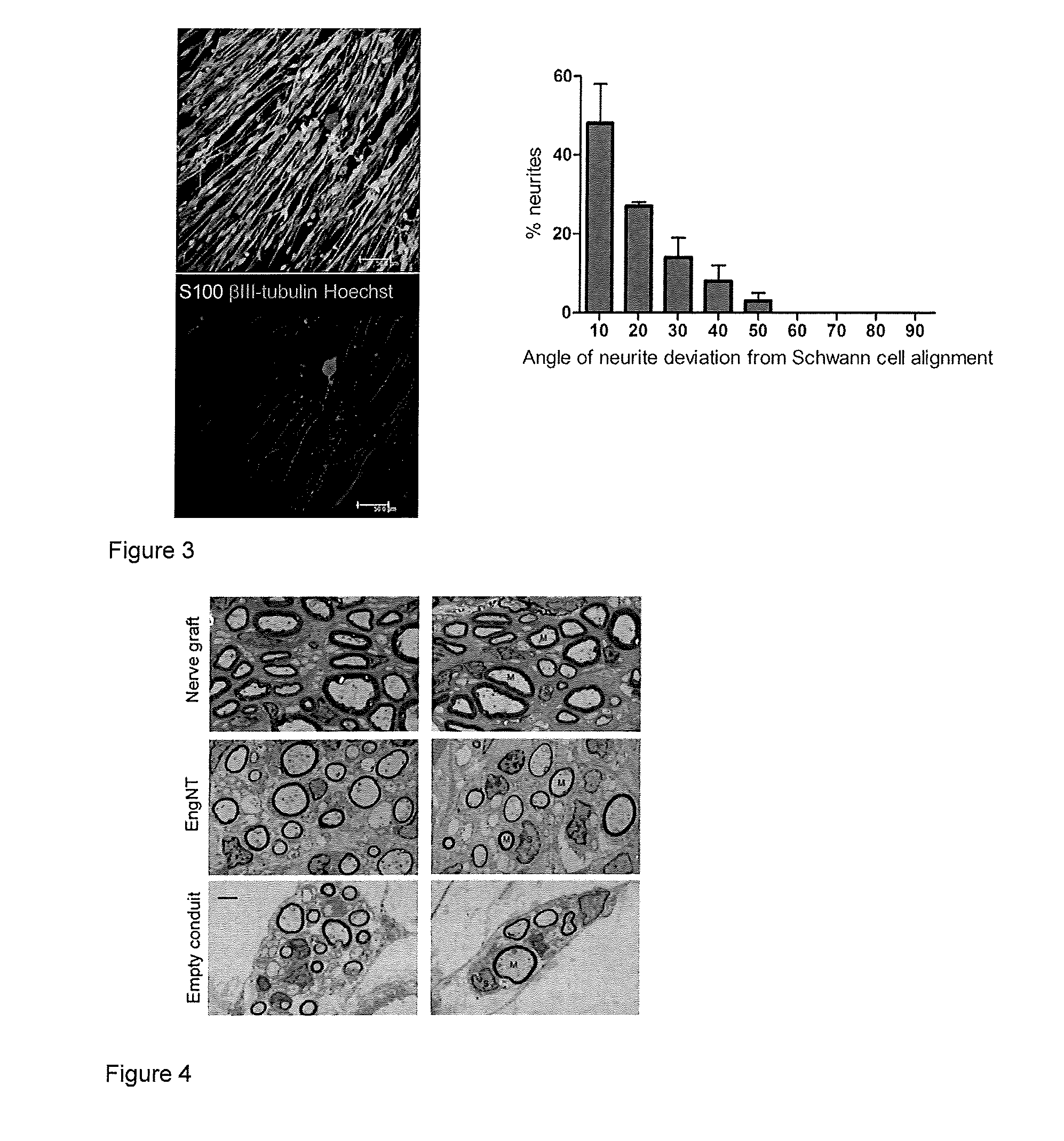Engineered neural tissue
- Summary
- Abstract
- Description
- Claims
- Application Information
AI Technical Summary
Benefits of technology
Problems solved by technology
Method used
Image
Examples
examples
[0049]FIG. 1 shows a schematic diagram of several stages in the production of tissue guides in accordance with the invention.
[0050]Cells are maintained in culture according to the manufacturer's instructions. For undifferentiated CX cells the media was supplemented with EGF (20 ng / ml working concentration) and FGF-2 (20 ng / ml). For the undifferentiated CTX cells the media was supplemented with tamoxifen (1 μl per 10 ml of media), EGF (20 ng / ml) and FGF-2 (10 ng / ml). The differentiation protocol for the CX cells was the removal of EGF and FGF, the differentiation protocol for the CTX cells was the removal of EGF, FGF-2 and tamoxifen. The protocols for the differentiation of CX and CTX were both over a 2 week period.
[0051]Cells are aligned within tethered collagen gels in rectangular stainless steel moulds, before stabilisation by plastic compression. To prepare gels, 1 volume of 10× minimum essential medium (Sigma) was mixed with 8 volumes of type I rat tail collagen (2 mg / ml in 0.6%...
experiment 1
EngNT Containing Schwann Cells Supports and Directs Neuronal Growth In Vitro
[0053]Results shown in FIG. 3. Regenerating adult rat dorsal root ganglion neurites follow the Schwann cell alignment present within EngNT (confocal micrographs of the same field showing neurons (red) after 3 days in co-culture with EngNT sheets formed using a rat Schwann cell line (green), scale bar 50 μm). The graph shows that a very high degree of alignment is achieved.
experiment 2
EngNT Containing Schwann Cells Supports Nerve Regeneration In Vivo
[0054]FIG. 4 shows transmission electron micrographs of a cross section at the midpoint of the repair site, 8 weeks after surgical repair of a 15 mm rat sciatic nerve gap. Two rods of EngNT (made with a rat Schwann cell line) were used within NeuraWrap™ outer sheath. Controls were nerve grafts from littermates or empty NeuraWrap™ conduits.
[0055]Axon diameters, myelin G-ratio and regeneration density in the EngNT group were equivalent to the “gold standard” of nerve graft controls, and regeneration was superior to empty conduits.
Neural Stem Cell Tests
[0056]In addition to the rat Schwann cell line, other cell types have been tested; including bone marrow derived mesenchymal stem cells, differentiated adipose derived stem cells, ReNeuron's neural stem cell lines, both research grade ReNcell CX cells from Millipore and the clinical grade CTX cell line, data are shown in experiments 3 and 4. Differentiated CX and CTX (dCX,...
PUM
| Property | Measurement | Unit |
|---|---|---|
| Shape | aaaaa | aaaaa |
| Freezing point | aaaaa | aaaaa |
| Therapeutic | aaaaa | aaaaa |
Abstract
Description
Claims
Application Information
 Login to View More
Login to View More - R&D
- Intellectual Property
- Life Sciences
- Materials
- Tech Scout
- Unparalleled Data Quality
- Higher Quality Content
- 60% Fewer Hallucinations
Browse by: Latest US Patents, China's latest patents, Technical Efficacy Thesaurus, Application Domain, Technology Topic, Popular Technical Reports.
© 2025 PatSnap. All rights reserved.Legal|Privacy policy|Modern Slavery Act Transparency Statement|Sitemap|About US| Contact US: help@patsnap.com



